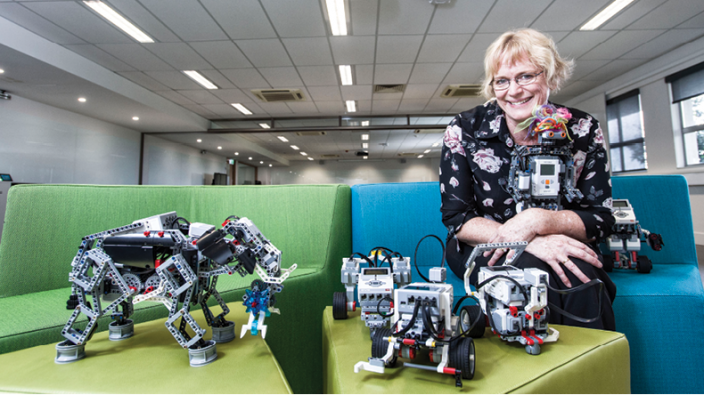
Our newest roboticists may soon be found in your early childhood centre. Journalist Fiona Stutz investigates how children as young as four years old are building and programing robots and the additional demands this places on teachers.
STEM (science, technology, engineering and mathematics) and robotics learning for students can no longer be ignored, as the Digital Technologies Curriculum has already been introduced into Queensland schools, with other states and territories to follow in 2017.
While the digital world is becoming commonplace in the school curriculum, children in early childhood settings are also advancing their skills in these areas.
Queensland University of Technology Faculty of Education Researcher Dr Christina Chalmers said introducing children to STEM and robotics early in life is essential for brain development and enables positive attitudes to form towards such studies and future careers.
“Research tells us that if kids don’t form positive attitudes towards science, maths and technology early in life they can find it difficult to engage later on. It is really important that children have these skills, but we need to make it fun for them and think about how they can be creative,” Dr Chalmers said.
She said robotics provided an engaging way for both students and teachers to work together, as it stimulates students’ curiosity in a way that fosters problem solving.
“Robotics activities are very effective because they are hands on and students get immediate feedback on whether their robot and program works or not. They are allowed, and even at times encouraged, to fail in order to work out what went wrong, learn from their failures and to share and develop their ideas with other students.”
Thinking outside the box
She said preliminary findings from a current study have shown preschool students have gone beyond simply playing games with a robot and can actually explain how the robot received its coded messages wirelessly.
“This involved quite complex conceptual thinking by four year olds as to how the robot’s behaviour was being controlled.”
Encouraging such technologies in early learning settings can have an impact for teachers with increased demands to keep updated on the latest technologies to promote student learning.
“Resources can be expensive to set up and extra support is needed to help teachers learn how to engage students with these technologies.”
Implementing programs in centres
Providing programs for young children to develop STEM literacy, together with comprehensive professional development, will allow early childhood professionals to develop these important skills and ultimately help educate the next generation of STEM graduates.
Such support may be found through a number of nationwide projects Dr Chalmers has developed to integrate robotics into classrooms, such as the Robotics@QUT program which includes 50 Queensland schools in low socio economic areas.
She said while the outreach program has not yet been funded for early learning centres, the ideas behind it can be replicated to support them.
“The program offers robotics loan kits, free teacher professional development, support from preservice teachers for teachers implementing robotics activities in the classroom and on campus community activities.”
Further training programs have been funded by the Federal Government to assist teachers and young children with a new way of engaging with STEM subjects to help underpin Australia’s competitiveness in the future.
The Little Scientists program is an initiative of FROEBEL Australia Ltd, a non profit provider of bilingual early childhood education and care services for children, designed to facilitate children’s curiosity for STEM through age appropriate, fun and playful experiments in their early years.
Every Australian early childhood service that works with children aged three to six can join the program.
The program helps spark teachers’ and educators’ interest in STEM and encourages them to implement the ideas and concepts from the workshops while exploring together with the children in their care.
It is also a useful tool to meet a range of requirements of the National Quality Framework (NQF) and the Early Years Learning Framework (EYLF).
Let’s Count is an early mathematics program for children aged three to five developed by The Smith Family, Charles Sturt University and Monash University.
The program supports early childhood teachers to have the skills and confidence to help develop the maths skills of the children in their care.
Teachers can feel confident that with professional development, incorporating such learning programs into early childhood centres will be beneficial to the children in their care.
References
Robotics@QUT
https://wiki.qut.edu.au/display/cyphy/Robotics@QUT
Little Scientists
https://littlescientistsau.wordpress.com/
Let’s Count
https://www.thesmithfamily.com.au/what-we-do/our-work/at-school/early-years-and-primary/lets-count



































































































































